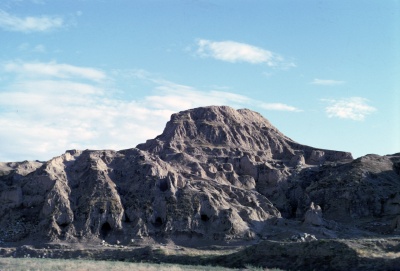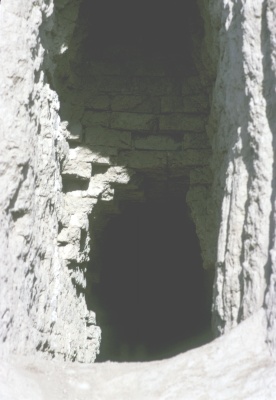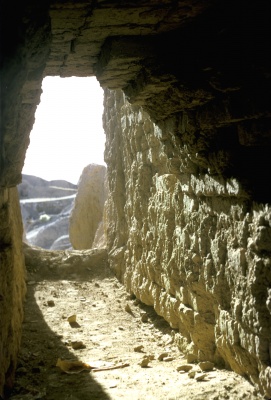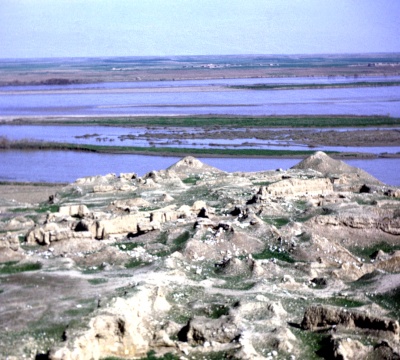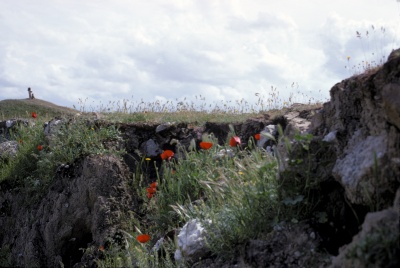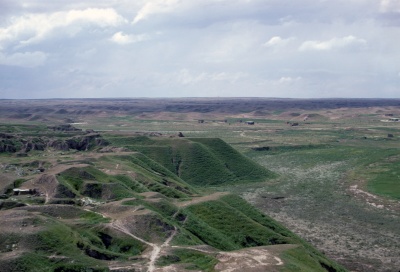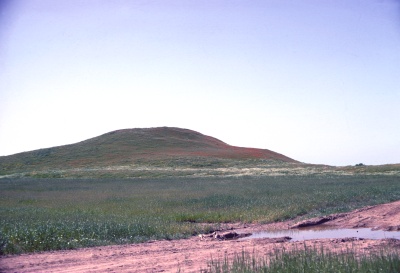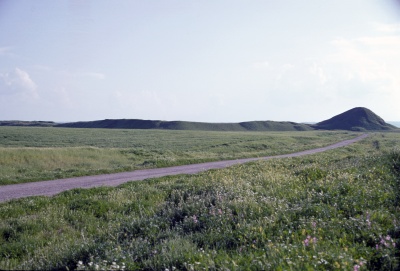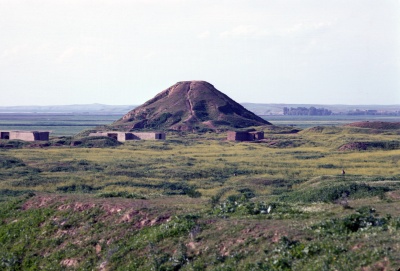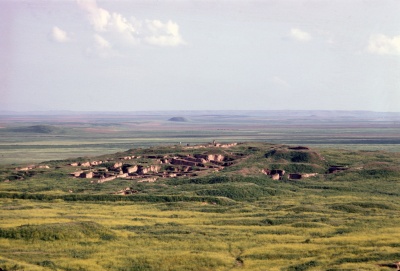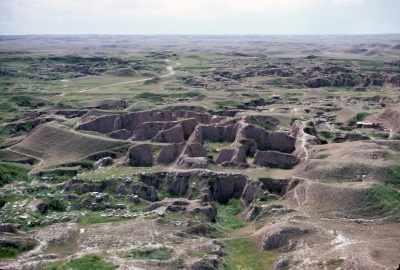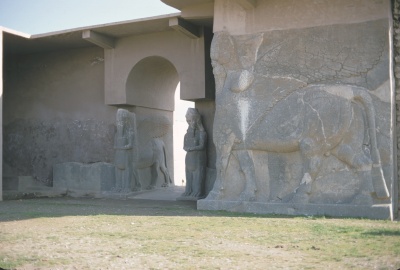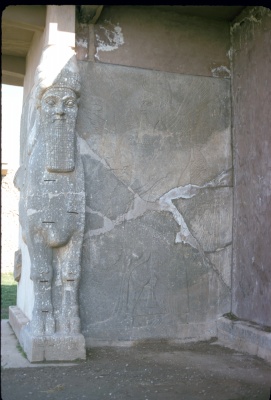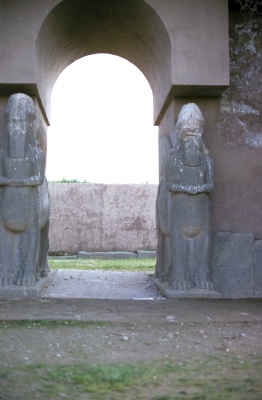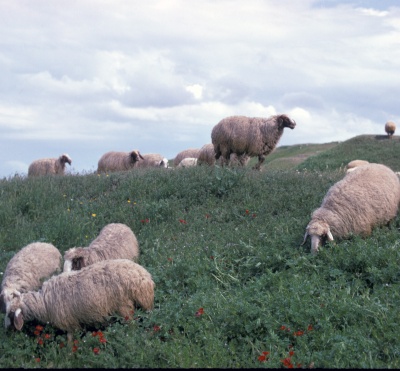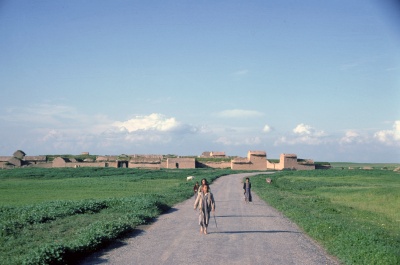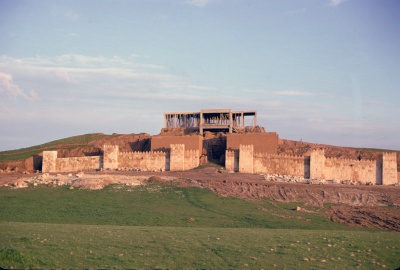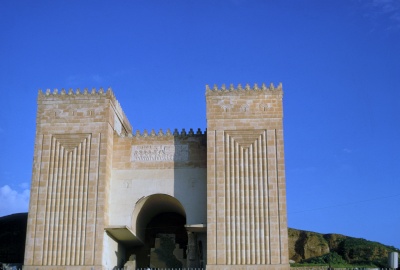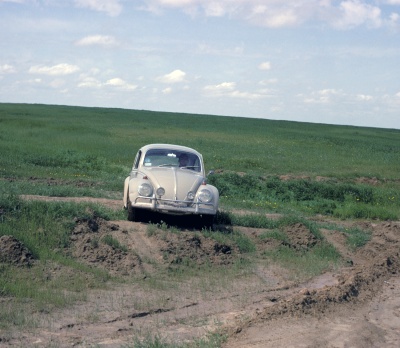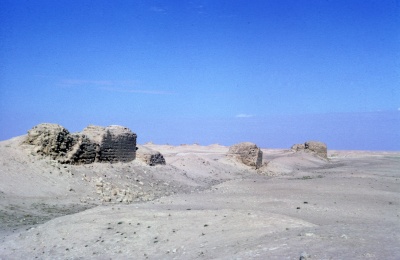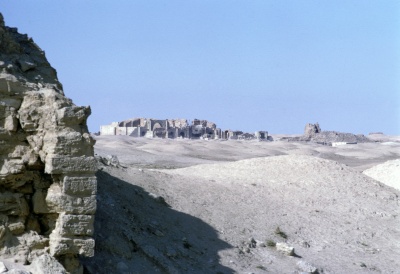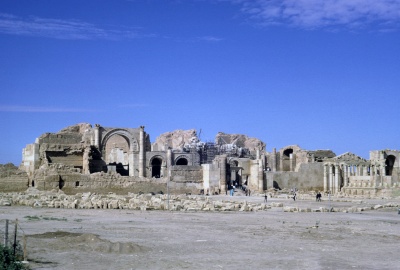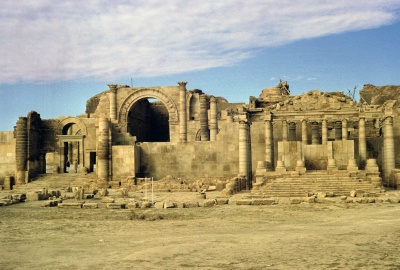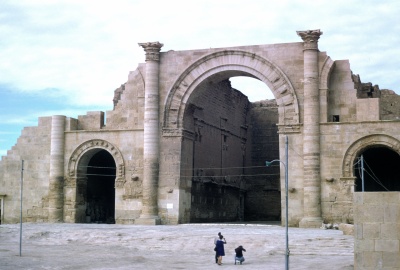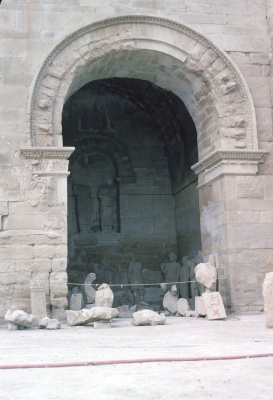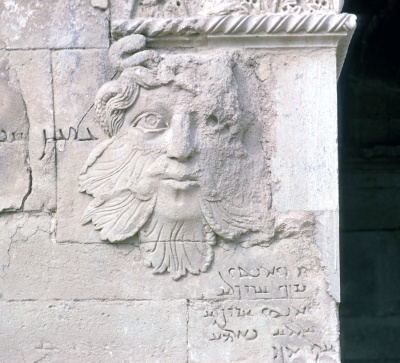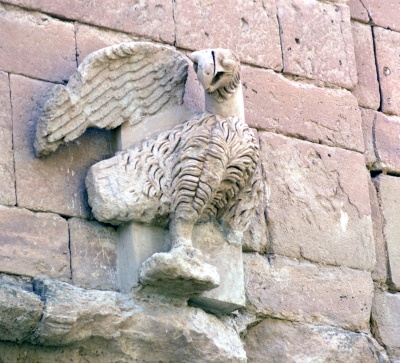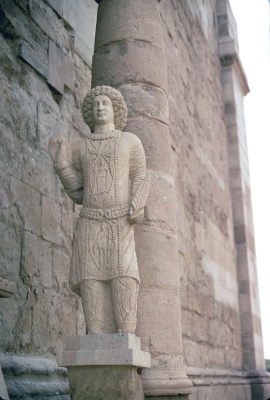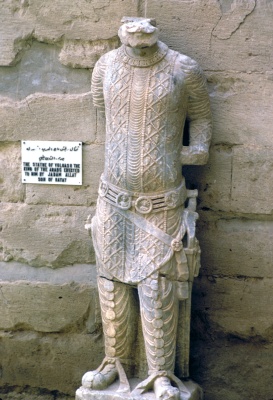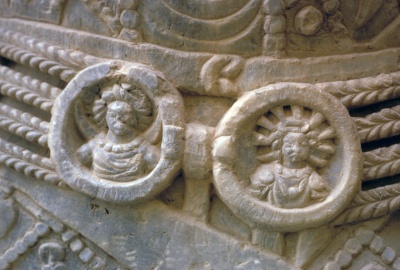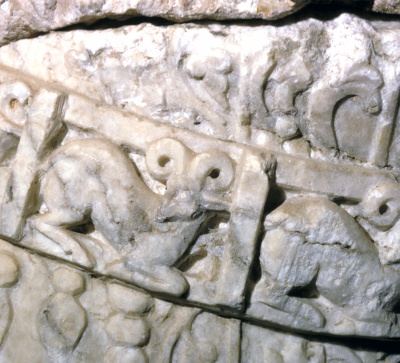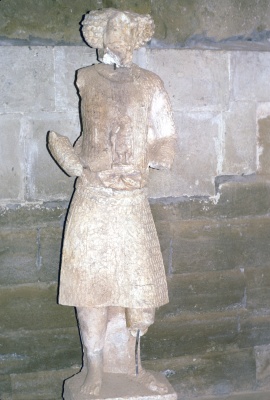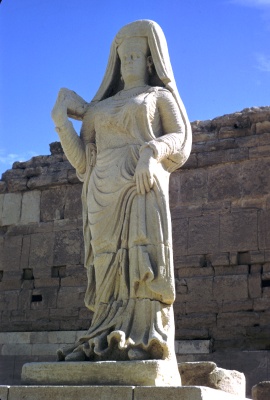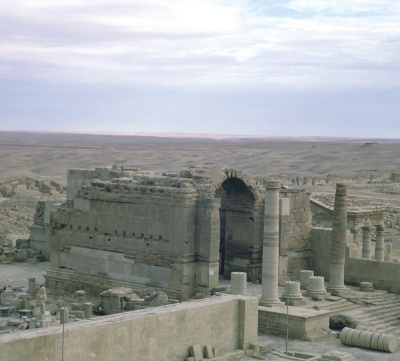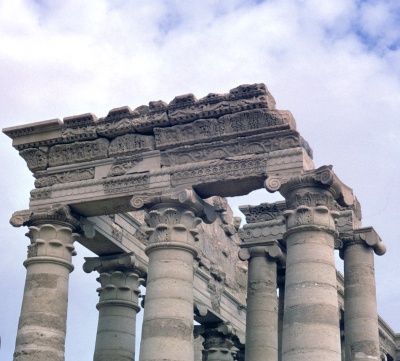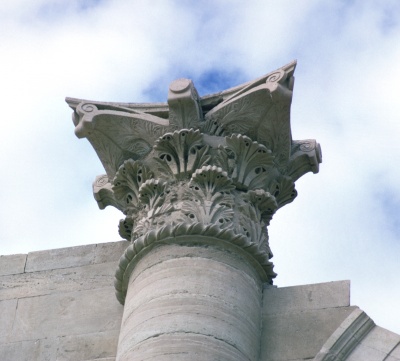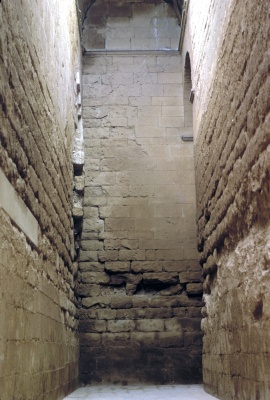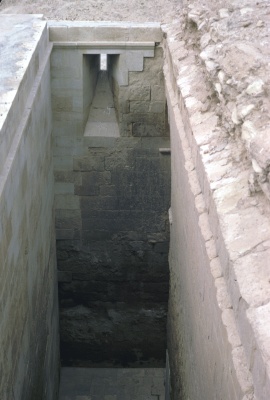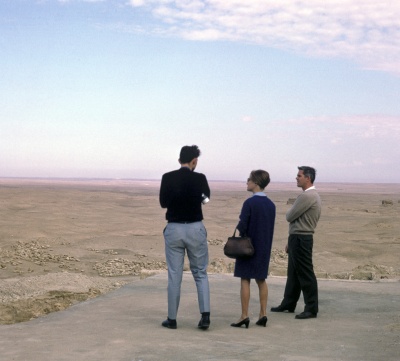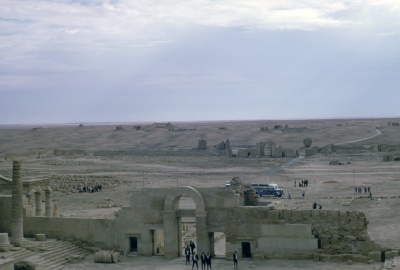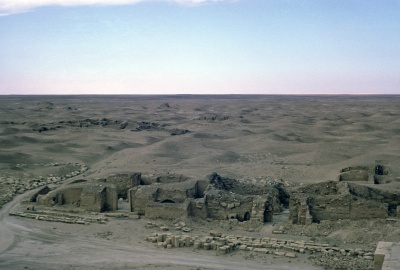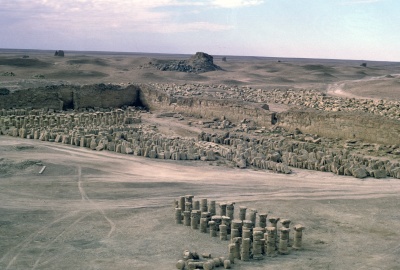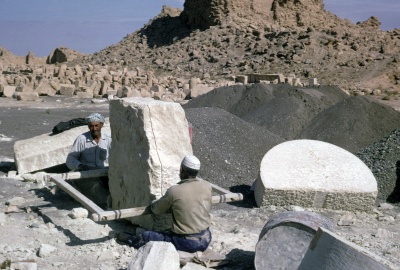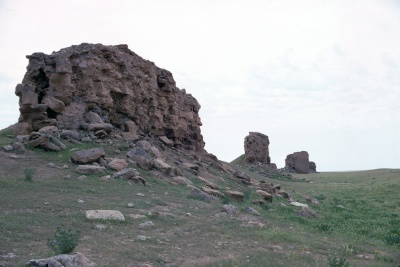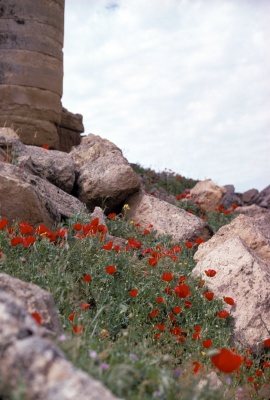2.1.1 Assur
Assur is located approx 200 km north of Baghdad along the road to Mosul. Assur is the 1st capital of Assyria, strategically located near the Tigris. Assyria was an important kingdom in north Iraq in the period 1550 BC –610 BC. Some of the most important kings Assyrian kings were: Shalmanesar I 1274-1245 BC Tiglatpileser I 1115-1077 BC Ashurnasirpal II 884-859 BC and Assurbanipal 668-631 BC.
Today only the ruins of Assur remain, including the Ziggurat or stage tower.
Assur was excavated by Walter Andrea 1903-1914 a German archeologist.
2.1.2 Tel Afar
Tel Afar is located about 50 km west of Mosul on the road to Syria. It was the capital of a small independent kingdom. The main temple was dedicated to Nimit Ishtar- The Goddess of Love. Today only the ruins of the ziggurat or stage tower remains.
2.1.3 Nimrud
Strategically located about 30 km south east of Mosul, along the river Tigris Nimrud/Kalach is the palace complex built by Ashurnasirpal II 884-859. It is an enormous complex of over 24 000 m2 with extensive ceremonial area including a throne room and huge reception halls, an administrative section and the large private residencial quarters of Ashurnasirpal II including his bedrooms and extensive harem complex.
Nimrud was excavated by Layard 1845-51 .He found many enormous statues of bull-men and mythological lions. Some were send to England while others remain in site. Beautiful ivory carvings were found during later excavations in the 1940s by the British archeologist Mallowan.
2.1.4 Nineveh
The 2nd capital of Assyria located 10 km east of Mosul on the road to Amadiya in Kurdistan. One of the Assyrian kings Assurbanipal 668-631 BC expanded Nineveh considerably by building many additional palaces and temples. His most important contribution to history is the extensive archive of clay tablets he established. He had copies collected of all still existing official documents he could obtain from the Sumerian, Akkadian, Babylonian and Assyrian kingdoms, covering a period from 3000BC- 660 BC. Fortunately his archive was preserved and forms now together with the library from Nippur one of the main written reference sources of the Mesopotamian civilization.
Nineveh was excavated by Botta and Layard. It was Layard who found Assurbanipals libray around 1850. During the 1960s the main gate and palace front of Assurbanipal’s palace were reconstructed.
2.1.5 Hatra
Located about 50 km west of Assur –Shirqat (200 km north of Baghdad)
Hatra was the capital of several Parthian kingdoms in the period 250 BC – 250 AD.
Its kings were Parthian and Arab. Hatra is located on a cross road of caravan tracks and was an important trade post. Apart from Parthian and Assyrian influences also Arab and Greek influences can be seen. During the 1960s large excavation and restoration projects were established in Hatra. The walls of Hatra measure 18 km. To day many bastions and wall sections remain in good condition. Hatra had a diameter of some 3 km and it is estimated that it had a population of between 100 000 to 200 000 inhabitants. Very impressive are the enormous Shamash – Sun temple and the Greek temple.
